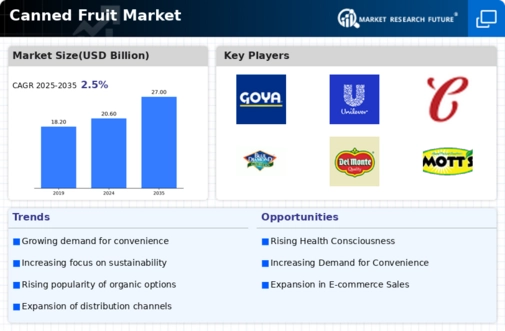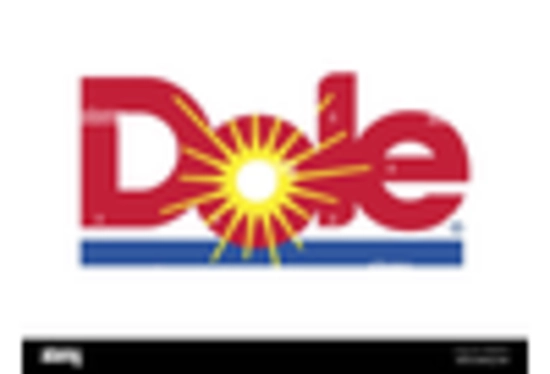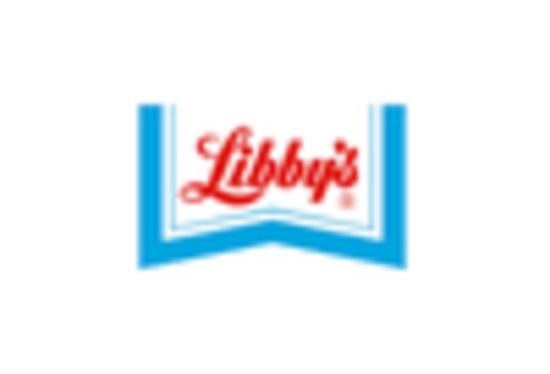The Canned Fruit is currently characterized by a dynamic competitive landscape, driven by evolving consumer preferences and a growing demand for convenience foods. Key players such as Del Monte Foods (US), Dole Food Company (US), and Libby's (US) are strategically positioning themselves through innovation and regional expansion. Del Monte Foods (US) has focused on enhancing its product portfolio with organic options, while Dole Food Company (US) emphasizes sustainability in its sourcing practices. Libby's (US), on the other hand, has been investing in digital transformation to improve customer engagement and streamline operations. Collectively, these strategies not only enhance their market presence but also contribute to a competitive environment that is increasingly focused on quality and sustainability.
In terms of business tactics, companies are localizing manufacturing to reduce costs and optimize supply chains. The Canned Fruit Market appears moderately fragmented, with several players vying for market share. However, the influence of major companies is significant, as they set trends that smaller firms often follow. This competitive structure allows for a diverse range of products, catering to various consumer segments, while also fostering innovation as companies strive to differentiate themselves.
In August 2025, Dole Food Company (US) announced a partnership with a leading technology firm to develop an AI-driven supply chain management system. This strategic move is likely to enhance operational efficiency and reduce waste, aligning with the growing consumer demand for sustainability. By leveraging technology, Dole aims to optimize its inventory management and improve the freshness of its products, which could provide a competitive edge in the market.
In September 2025, Del Monte Foods (US) launched a new line of canned fruits that are certified organic, responding to the increasing consumer preference for healthier options. This initiative not only broadens their product range but also positions Del Monte as a leader in the organic segment of the canned fruit market. The introduction of organic products may attract health-conscious consumers, thereby enhancing brand loyalty and market share.
In October 2025, Libby's (US) unveiled a comprehensive digital marketing campaign aimed at younger consumers, utilizing social media platforms to engage with this demographic. This strategic focus on digital channels reflects a broader trend in the industry, where companies are increasingly recognizing the importance of online presence. By targeting younger consumers, Libby's seeks to cultivate brand affinity and drive sales in a competitive market.
As of October 2025, the Canned Fruit Market is witnessing trends such as digitalization, sustainability, and the integration of advanced technologies. Strategic alliances are becoming more prevalent, as companies recognize the need to collaborate to enhance their competitive positioning. Looking ahead, it is anticipated that competitive differentiation will increasingly hinge on innovation and technology, rather than solely on price. Companies that can effectively leverage these trends are likely to thrive in an evolving market landscape.

















Leave a Comment